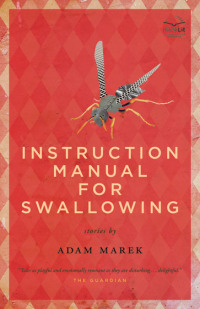Tumblin' Dice by John McFetridge
 Friday, April 6, 2012 at 10:30AM
Friday, April 6, 2012 at 10:30AM 
Published by ECW Press on January 25, 2012
The High, a Canadian band that has been around since the 1970s, is back on tour, playing Indian casinos and similar venues with the likes of Grand Funk Railroad and the Doobie Brothers. Ritchie Stone (lead guitar) is getting it on with Emma (business manager) while Cliff Moore (singer) has sex with as many soccer mom groupies as he can find. Dale (drummer) brings his wife of thirty years with him on the tour bus. So far this sounds like a typical road band story, but here's the twist: Barry Nemeth (bass) picks up extra cash by stealing equipment and instruments from other bands and selling them to the loan sharks who haunt the casinos. Soon Cliff and Barry begin to rob the sharks at gunpoint, a fun hobby until an unfortunate incident prompts Cliff to swear he will never do it again. But then the opportunity arises for a final score, one that is motivated by as much by revenge as much as the chance to walk away with serious money.
Other characters making significant contributions to the plot include the band's shady ex-manager, a horny drug cop who wants to be a homicide cop, various other members of the Canadian and American law enforcement communities, an ex-stripper who is the de facto business manager of the Saints of Hell motorcycle gang, and of course a hooker -- because what would a casino novel be without a hooker? One plot thread concerns the motorcycle gang's plan to move in on the Mafia-type gangsters who control a casino; another follows the investigation of a Pakistani girl's killing by a family member.
Rock fans will appreciate all the nostalgic references to bands and musicians, including a funny riff on various recording artists who died violently, the subject of Cliff's musing while he's locked in a trunk after a robbery gone wrong. The High supposedly played or partied with everybody back in the day, from Chuck Berry to Keith Richards. All the name dropping is fun, particularly if you're old enough to remember the older bands (or a younger fan of classic rock).
Tumblin' Dice rips along at the frantic pace of a high energy rock song. There's a certain stream of consciousness quality to John McFetridge's prose, marked by sentence fragments, run-on sentences, and haphazard use of quotation marks. It's the kind of style that often irritates me, but I got used to it quickly and actually started to enjoy it. Dialog tends to channel writers like Elmore Leonard, a style that is rarely mimicked successfully, but McFetridge handles it well.
The plot is a bit convoluted. It occasionally meanders. I'm not quite sure why the plot thread involving the Pakistani is part of the novel; it contributes little of value. Major characters (particularly cops) drop out of sight before the story concludes. Yet what I admired about Tumblin' Dice wasn't so much the crime story (although I like its surprising and amusing resolution) as the band story, the fact that four guys finally get it together in late middle age and figure out at the end of their musical careers how to be the kind of band they always wanted to be, how to make music that has the audience screaming and dancing in the aisles, how to have fun performing together. That theme, combined with solid characters, makes Tumblin' Dice an enjoyable reading experience.
RECOMMENDED



